Actron CP9125 User Manual
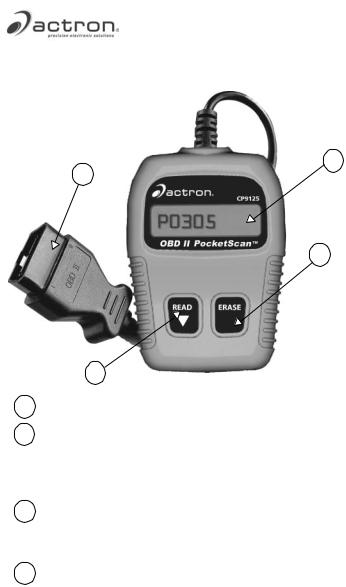
CP9125 OBD II PocketScan™ Code Reader
For use with OBD II Compliant Vehicles
1
4
2
3
1LCD Display - Is a Single Line Display with 8 characters.
2ERASE Key - Used to Erase Trouble Codes and I/M Monitor status from Vehicle’s Computer Modules and scroll up through screens. (I/M Monitors are currently used for state emissions tests.)
3READ/Scroll Down Key - Used to view Read Codes, MIL Status, I/M Readiness Status and Scroll down through screens.
4OBD II Connector - Used to communicate with OBD II compliant vehicles.
0002-003-2666

Safety Precautions
For safety, read, understand and follow all safety messages and instructions in manual before operating the PocketScanTM Code Reader.
Always refer to and follow safety messages and test procedures provided by manufacturer of vehicle and PocketScanTM Code Reader.
Signal Words Used:
!DANGER
!WARNING
!CAUTION
IMPORTANT
Indicates a possible hazardous situation which, if not avoided, will result in death or serious injury to operator or bystanders.
Indicates a possible hazardous situation which, if not avoided, could result in death or serious injury to operator or bystanders.
Indicates a possible hazardous situation which, if not avoided, may result in moderate or minor injury to operator or bystanders.
Indicates a condition which, if not avoided, may result in damage to test equipment or vehicle.
Important Safety Messages
•Always wear ANSI approved eye protection.
•Always operate vehicle in a well-ventilated area.
•Always keep people, tools and test equipment away from all moving or hot engine parts.
•Always make sure vehicle is in PARK (automatic transmission) or Neutral (manual transmission) and parking brake is set.
•Always block drive wheels and never leave vehicle unattended while testing.
•Always keep a fire extinguisher suitable for gasoline/ electrical/chemical fires readily available.
•Never lay tools on vehicle battery.
2
•Always use caution when working around ignition coil, distributor cap, ignition wires, and spark plugs. Components can produce a High Voltage while engine is running.
•Battery acid is caustic. If contacted, rinse with water or neutralize with a mild base (i.e. baking soda). If in eyes, flush with water and call a physician immediately.
•Never smoke or have open flames near vehicle. Vapors from gasoline and battery during charge are explosive.
•Never use the PocketScanTM Code Reader if internal circuitry has been exposed to moisture. Internal shorts could cause a fire and damage.
•Always turn ignition key OFF when connecting or disconnecting electrical components, unless otherwise instructed.
•Some vehicles are equipped with safety air bags. Follow vehicle service manual cautions when working around air bag components or wiring. Note, air bag can still open several minutes after ignition key is off.
•Always follow vehicle manufacturer’s warnings, cautions and service procedures.
3
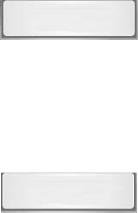
PocketScanTM Code Reader Features
Read Codes:
Reading Diagnostic Trouble Codes allows the PocketScanTM Code Reader to read the codes from the vehicle’s computer modules.
• Diagnostic Trouble Codes:
Diagnostic Trouble Codes are P0443 used to help determine the cause
of a problem or problems with a
vehicle. Diagnostic Trouble Codes are set when a fault is present for a sufficient amount of time.
• Pending Codes: Pending Codes are also referred to as “continuous monitor codes” and “maturing codes.” Pending Codes occurs when the code has not occurred a specific number of times (depending on
vehicle,) causing the code to mature.
4

MIL Conditions:
MIL (Malfunction Indicator Lamp) Status displays the state of the vehicles computer module(s).
• MIL ON: Indicates that the |
MIL ON |
|
Malfunction Indicator Lamp on |
|
|
vehicle should be ON indicating |
|
|
a possible emissions problem. |
|
|
√ If the MIL Status is ON and the MIL is not illuminated with the engine running, then a problem exists in the MIL circuit.
• MIL OFF: Indicates the
Malfunction Indicator Lamp MIL OFF should be off and there should
be no emission problems.
√Some manufacturers will turn the MIL off if a certain number of drive cycles occur without the same fault being detected.
√Diagnostic Trouble Codes related to a MIL are erased from the computer’s memory after 40 warm-up cycles if the same fault is not detected.
5
Inspection / Maintenance Monitors (I/M Monitors):
The I/M Monitors (Inspection / Maintenance) function displays a SNAPSHOT of the operations for the Emission System.
√After a specific amount of drive time (each monitor has specific driving conditions and time required), the computer’s “monitors” will decide if the vehicles emission system is working correctly.
√Some states MAY NOT require all monitors listed to be “Ready” to pass the emissions test. Check with state testing site for exact requirements. All states will fail a vehicle that has the “MIL Light” lit at time of test.
•Monitors Viewed:
Monitors |
Expanded Name |
Misfire |
Misfire Monitor |
Fuel |
Fuel System Monitor |
Comp |
Comprehensive Components Monitor |
Catlyst |
Catalyst Monitor |
Htd Cat |
Heated Catalyst Monitor |
Evap |
Evaporative System Monitor |
Sec Air |
Secondary Air System Monitor |
A/C |
Air Conditioning Refrigerant Monitor |
O2 Snsr |
Oxygen Sensor Monitor |
O2 Htr |
Oxygen Sensor Heater Monitor |
EGR |
Exhaust Gas Recirculation |
•Monitor Status:
Status |
Description |
|
Ready |
Vehicle was driven enough under proper conditions to |
|
complete the monitor. |
||
Inc |
(Incomplete) - Vehicle was not driven enough under |
|
proper conditions to complete the monitor. |
||
|
•Monitors may be cleared by:
−Using the erase codes function.
−Disconnected or discharged battery (on some vehicles.)
−Computer module losing power (on some vehicles.)
6
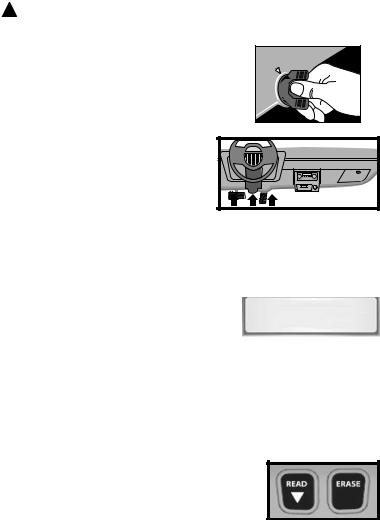
Reading Diagnostic Trouble Codes and Data
|
Avoid Cooling Fan! Fan may turn on |
! WARNING |
|
|
during test. |
|
1.Turn Ignition Key to the Off Position.
|
F |
F |
|
O |
|
ON
2. Locate and Plug in Data Link
Connector (DLC.) NOTE: The data link connector
should be located under the dashboard on the driverside of the vehicle.
If the data link connector is not located under the dashboard as stated, a label describing the location of the data link connector should be there.
3. Observe Display toggles between |
|
“Pocket” and “Scan”. |
NOTE: For a correct reading for
Diagnostic Trouble Codes and I/M Monitor Status, ignition key must be in the ON position and Engine does
not require starting.
To get a correct reading for MIL Status, Engine must be started.
4.Start Engine.
5.Press READ/Scroll Down Key
READ/Scroll Down Key  and Release.
and Release.
7
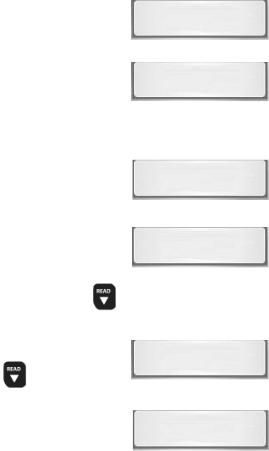
NOTE: If diagnostic trouble codes (DTCs) are already being displayed from a previous read operation, press and hold
 READ/Scroll Down key for 3 seconds and release.
READ/Scroll Down key for 3 seconds and release.
6.Observe a Moving * on Display.
NOTE: If a “No Link” message displays, cycle ignition key to the OFF position for 10
seconds, then back ON and repeat “Reading Diagnostic Data.”
7. View Codes on Display
3 Codes
NOTE: If there are no codes present, |
0 Codes |
the tool will display “0 |
|
Codes” and proceed to |
|
display MIL Status when |
READ/Scroll Down is |
pressed. |
|
•To View Codes press and
release READ/Scroll Down key.
•If the code is a Pending Code a Vwill be displayed.
P0443
P0452 V
8

8.View MIL Status
•Press and release
READ/Scroll Down
key.
9. View I/M Monitors that are Incomplete.
• Press and release
READ/Scroll Down
key.
MIL ON
Monitrs
2 Inc
Misfire
NOTE: If there are no more I/M |
|
|
Monitors that are Incomplete, |
||
5 Ready |
||
the tool will then display Ready |
|
Monitors when  READ/Scroll Down key is pressed.
READ/Scroll Down key is pressed.
10. View I/M Monitors that are Ready. |
|
|
• Press and release |
||
O2 Htr |
READ/Scroll Down
key.
NOTE: Pressing the ERASE key will scroll up to review
Diagnostic Trouble Codes and Data.
NOTE: Holding READ /Scroll Down key for 3 seconds will read Diagnostic Trouble Codes and Data again.
9

Erasing Diagnostic Trouble Codes and Data
Erasing allows the PocketScanTM Code Reader to delete the codes and I/M Monitor status from the vehicle’s computer modules.
IMPORTANT
! WARNING
Only Erase Diagnostic Data after checking system completely and writing down results.
Avoid Cooling Fan! Fan may turn on during test.
1.Turn Ignition Key to the Off Position.
|
F |
F |
|
O |
|
ON
2. Locate and Plug in Data Link
Connector (DLC.) NOTE: The data link connector
should be located under the dashboard on the
driverside of the vehicle.
If the data link connector is not located under the dashboard as stated, a label describing the location of the data link connector should be there.
3.Observe Display toggles between “Pocket” and “Scan”.
4.Turn Ignition Key to the ON Position leaving Engine Off.
NOTE: Make sure that the Ignition Key is ON and NOT in the Accessory Position.
10
Scan
ON
F  F
F

O
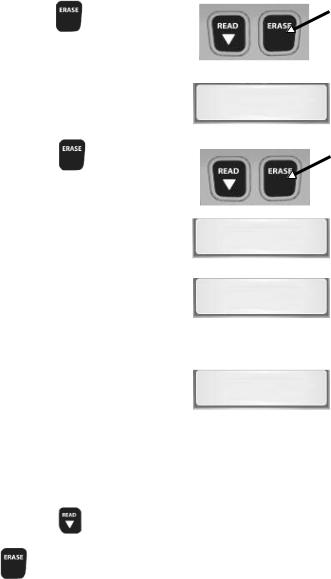
5.Press and Hold |
ERASE Key for |
|
|
|
3 Seconds and Release. |
|
|
||
6.Observe “ERASE?” Displays. |
|
|
||
ERASE? |
||||
|
|
|||
7.Press and Hold |
ERASE Key |
|
|
|
|
|
|||
for 3 Seconds and Release. |
|
|
||
8.Observe a Moving - on Display. |
|
|
||
- |
|
|||
|
|
|
||
NOTE: If a “NO LINK” message |
NO LINK |
|||
displays, cycle ignition key to |
||||
the OFF position for 10 seconds, then back ON, and repeat “Erasing Diagnostic Data.”
9.Observe “DONE” Displays.
DONE
NOTE: If the problem causing Diagnostic Trouble Code(s) still exists, the code will return. The Diagnostic Trouble Code may return immediately or may return after vehicle has been driven.
NOTE: Pressing READ /Scroll Down key will read
Diagnostic Trouble Codes and Data and Holding
ERASE key will erase results again.
11
Using Included CD
The Included CD is NOT required to use tool.
•Some items included on the CD are:
Manual included with tool.
DTC Lookup Software.
Adobe Acrobat Reader.
•To be able to use the included CD the PC must meet the following minimum requirements:
486 PC.
4 MB of RAM.
Microsoft Windows 95 or Newer.
CD ROM Drive.
Adobe Acrobat Reader.
Internet Explorer 4.0 or Higher.
Minimum Screen Resolution of 800 x 600.
—If resolution is 800 x 600, in Display Properties, Settings Tab, Set Font Size to Small Fonts.
12

Running Applications On Included CD
1.Close All Programs on Computer.
2.Place Included CD in CD-Drive.
NOTE: If CD does not start automatically; Select the Start button. Select
Run...Enter “X:\Menu.Exe” in Open Box on Computer and select OK.
NOTE: “X” is the CD-ROM drive letter on the computer.
3.Observe Menu Appears.
4.Follow screen prompts on computer to run applications.
13
Diagnostic Trouble Codes (DTCs)
This section contains the J2012 Diagnostic Trouble Codes (DTCs) as defined by the Society of Automotive Engineers (SAE). Diagnostic Trouble Codes (DTCs) are recommendations not a requirement. Manufacturers may not follow these, but most do.
Check vehicle’s service manual for DTC meaning if the code(s) you are getting does not make sense.
Diagnostic Trouble Code (DTCs) definitions have been assigned or reserved by the Society of Automotive Engineers (SAE) to direct to proper service area(s).
Codes not assigned or reserved by the Society of Automotive Engineers (SAE) are reserved for the manufacturer and referred to as Manufacturer Specific Diagnostic Trouble Codes (DTCs).
Remember:
•Visual inspections are important!
•Problems with wiring and connectors are common, especially for intermittent faults.
•Mechanical problems (vacuum leaks, binding or sticking linkages, etc.) can make a good sensor look bad to the computer.
•Incorrect information from a sensor may cause the computer to control the engine in the wrong way. Faulty engine operation might even make the computer show a known good sensor as being bad!
NOTE: Additional DTC definitions can be obtained from the CD supplied. If there are any problems operating the supplied CD contact Customer Service
at 1(800) 228-7667.
14
